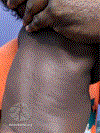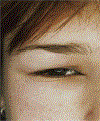Chronic Spontaneous Urticaria: Etiology and Pathogenesis
- PMID: 38937007
- PMCID: PMC11218737
- DOI: 10.1016/j.iac.2024.03.002
Chronic Spontaneous Urticaria: Etiology and Pathogenesis
Abstract
Urticaria, also known as hives, is a common condition thought to affect up to 20% of individuals worldwide in their lifetime. This skin condition is characterized by the appearance of pruritic, erythematous papules or plaques with superficial swelling of the dermis. The major complaint is the symptom of pruritus. Angioedema, which involves a deeper swelling of dermal or mucosal tissues, may accompany urticaria. Urticaria can be classified by both time course of symptoms and the underlying etiology.
Keywords: Basophils; Chronic urticaria; Eosinophils; Mast cells.
Copyright © 2024 Elsevier Inc. All rights reserved.
Conflict of interest statement
Disclosure E.T. Oliver: Grant Support: National Institutes of Health, United States (K23AI139394), Robert Meyerhoff Professorship Advisory Board/Consultant: Novartis, Regeneron/Sanofi. S.S. Saini: Grant Support: Novartis, Switzerland, Sanofi, France, Regeneron, United States, National Institutes of Health, United States, Allakos, Escient Advisory Board/Consultant: Allakos, Granular Therapeutics, Novartis, Aquestive, Regeneron, Escient, Evommune, Innate, Celltrion, Sanofi.
Figures








References
-
- Buttgereit T, Vera C, Aulenbacher F, et al. Patients with chronic spontaneous urticaria who have wheals, angioedema, or both, differ demographically, clinically, and in response to treatment-results from CURE. J Allergy Clin Immunol Pract. 2023;11(11):3515–3525.e4. doi: 10.1016/j.jaip.2023.08.020. - DOI - PubMed
-
- Sabate-Bresco M, Rodriguez-Garijo N, Azofra J, et al. A comparative study of sex distribution, autoimmunity, blood, and inflammatory parameters in chronic spontaneous urticaria with angioedema and chronic histaminergic angioedema. J Allergy Clin Immunol Pract. 2021;9(6):2284–2292. doi: 10.1016/j.jaip.2021.03.038. - DOI - PubMed
-
- Gaig P, Olona M, Munoz Lejarazu D, et al. Epidemiology of urticaria in spain. J Investig Allergol Clin Immunol. 2004;14(3):214–220. - PubMed
Publication types
MeSH terms
Grants and funding
LinkOut - more resources
Full Text Sources

